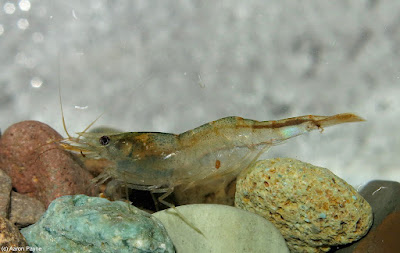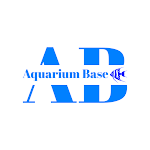Australian glass shrimp is particularly useful in home aquariums because they love to feed on algae, and keep your tank clean...
Australian glass shrimp and its scientific name - Paratya australiensis is particularly useful in home aquariums because they love to feed on algae, and keep your tank clean. They are hardy little animals, and can generally take care of themselves.
AUSTRALIAN GLASS SHRIMP DESCRIPTION:
Australian glass shrimp is widespread in coastal areas along the eastern seaboard of Australia, distributed in Queensland, New South Wales, Victoria and Tasmania. They are usually found in aquatic vegetation along the edge of water bodies including lakes, ponds, rivers and the upper least saline areas of estuaries and generally reaching a size of 3 cm, maximum 4 cm.
As the name implies, Paratya australiensis are basically transparent but there are some rarer varieties that are coloured. As decapods, the shrimp have five pairs of legs, also there are thick tufts of hairlike setae at the end of the fingers. They can move quickly, often using a flick of the tail to escape from predators.
Mature females as with many shrimp are larger, more robust and their carapace extends further down around the area where the pleopods are so that they can accommodate eggs. Males consequently have a slimmer profile, though it is harder to spot in the transparent variants.
AUSTRALIAN GLASS SHRIMP CARE:
Australian glass shrimp are suitable for any freshwater tank, living quite happily in either tropical or indoor cold water aquariums. They do best with water temperature of between 12-25 °C and pH level of 6.5-7.5 (do not allow to drop below 6.5), though they can survive in waters that are as cold as 5 °C or as warm as 30 °C over extended periods.
The shrimp are more active at tropical temperatures, and will rarely be seen in cooler water as they enter a hibernation-like state. Glass shrimp should have some plants to hide in, particularly if they are kept with fish that might eat them. Mosses are a popular and effective choice.
They make good scavengers and are not destructive to aquatic plants as they poke around in all corners looking for the tiniest particles of left over food. They are very unlikely to cause any harm to even your smallest fish or eggs, and are not really interested in anything moving.
Paratya australiensis get on well with each other and can be kept several per container. They are ideal for small aquariums such as nano tanks, and bowls. If kept with aquarium fish they should not be mixed with large species as they are relished by fish as food.
To enable them to grow, glass shrimp moult several times a year. For a short time after they moult their skeleton is quite soft and they should not be handled or moved. They should also be provided with adequate shelter and hiding places in the form of plant thickets, rocks or caves.
These shrimp derive their oxygen from water they live in and are adversely affected by the accumulation of waste products. They are sensitive to copper in the water, so ensure medications containing copper are not used. Their water and their environment should be looked after as for aquarium fish.
They are omnivores and will consume various types of algae, detritus and left over food. If insufficient food is present, supplement with a quality flake food, pellet or algae wafers. One algae pellet per day will feed many shrimp, and even with less frequent feeding they will have enough natural food to graze on in a well planted tank.
AUSTRALIAN GLASS SHRIMP BREEDING:
Australian glass shrimp have a life cycle of about two years in their natural habitat. Females brood their eggs on the underside of their tail during August and September. The young hatch from the eggs in late spring/summer and are free-swimming. The drier summer months are usually those with the lowest water flows, thus the planktonic young avoid being washed out to sea.
Breeding seems to be triggered by warmer temperatures and females will not become berried at low temperatures or after a temperature drop. Some females will breed twice within a season. It is certainly possible that breeding could occur in aquaria year round.
Embryonic duration is dependent on temperature (28 days at 18 °C, but only 22 days at 21 °C). Once the eggs hatched, the larvae were fed with algae or newly hatched Artemia. Larvae took 28-45 days to develop then settled onto the bottom and began feeding like adults. Larvae developing from large eggs (found in cooler, less saline waters) are significantly larger at all stages of development, larval duration is shorter and growth rate iss faster than that of larvae from small eggs.
BUY AUSTRALIAN GLASS SHRIMP AND RELATED PRODUCTS:














COMMENTS